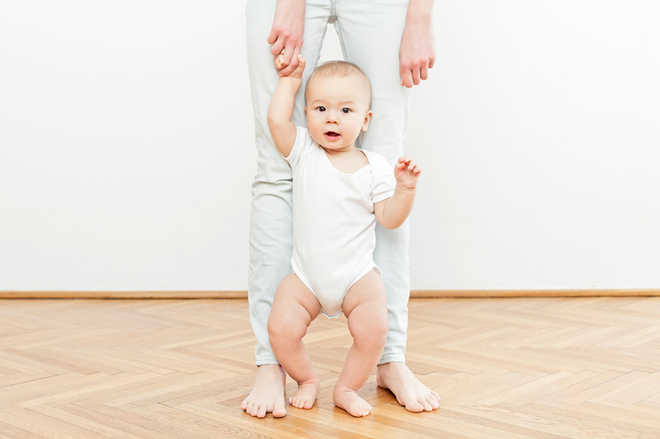Human babies learn to walk like infant animals do
London, July 10
Humans and other terrestrial animals learn how to walk in similar ways, finds an interesting study.
"We look at the emergence of walking behaviours in both human babies and infant animals, as they develop," said lead author Nadia Dominici from VU University in Netherlands.
Movements such as walking are created from the flexible combination of a small set of groups of muscles that simplify the control of locomotion, called "locomotor primitives".
The findings showed that human babies are born with just two walking primitives: the first directs the legs to bend and extend; the second commands the baby's legs to alternate -- left, right, left, right -- in order to move forward.
To walk independently, babies learn two more primitives, which is to handle balance control -- step timing and weight shifting.
These primitives are unexpectedly alike across different animals -- including rats that the study explored.
"Despite all of the differences in body structure and evolution, locomotion in several animal species could start from common primitives, maybe even stemming from a common ancestral neural network," Dominici added.
Babies are born with an instinct for walking and these are reflected when the child is held near to the floor.
The primitive stepping reflex displayed by the child shows the natural "walking" instinct, which becomes the foundation on which children build an independent walking motion, said the paper.
Understanding these first steps can improve the rehabilitation of patients recovering from spinal cord injury, and children with cerebral palsy, the researchers concluded. — IANS










